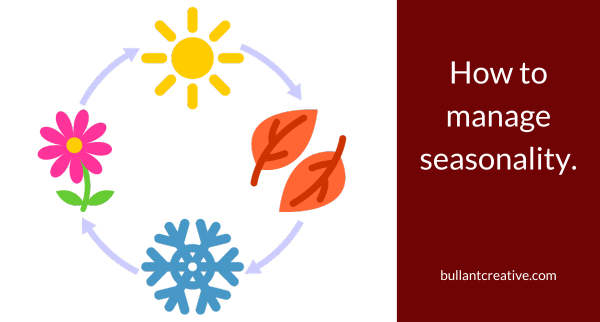Seasonality presents a significant challenge in the ever-evolving world of Fast Moving Consumer Goods. This cyclical pattern brings predictable yet disruptive fluctuations in demand that can interrupt production lines. With careful planning, you can overcome this challenge and turn seasonal highs and lows into lucrative opportunities.
With summer just around the corner, the demand for essentials like bottled water and ice creams is set to skyrocket. By proactively anticipating and preparing for this surge, manufacturers can effectively meet consumer needs, capitalise on the heightened demand, stay ahead of the competition, and maximise their potential during summer.
Here are two strategies for managing seasonality on your production line: stockpiling finished goods inventory and harnessing additional production capacity at factories.
1 Stockpiling Finished Goods Inventory
Let’s draw inspiration from the Bullant 😉 , tirelessly gathering food for the winter. In manufacturing, it means maintaining a steady production flow throughout the year, accumulating surplus inventory, and releasing it when demand reaches its peak.
The brilliance of this strategy lies in its simplicity. By having a substantial inventory of finished goods, you are well-equipped to tackle the surge in demand head-on, without straining your production or compromising on delivery times.
However, challenges do arise. Stockpiling inventory requires adequate and often costly space, incurs insurance costs, and carries the risk of product obsolescence. It requires a delicate balance – weighing the benefits of meeting peak demand against the costs of maintaining a large inventory.
![]()
2 Harnessing Additional Production Capacity
Consider an alternative approach: harnessing extra production capacity at factories. Envision the ability to ramp up production as required, akin to adjusting the volume on a stereo. This strategy achieves just that by extending work hours, hiring temporary staff, or subcontracting to third-party manufacturers. It empowers you to scale up production to meet peak demand.
This approach proves invaluable for businesses grappling with high storage costs or dealing with perishable goods. It facilitates increased output, ensures product freshness, and minimises the need for extensive warehousing.
However, this is not a strategy to be taken lightly. Leveraging additional capacity requires meticulous planning. You need reliable suppliers who can rise to the occasion with increased raw material supplies and a logistics system capable of handling expanded output.
![]()
Both stockpiling finished goods inventory and leveraging additional production capacity are robust strategies for managing seasonality on your production line. The choice between these two strategies depends on your specific business circumstances – the nature of your products, seasonal demand predictability, storage capabilities, and ability to scale production.
Remember, the key to effective seasonality management lies in proactive planning, agility, and a profound understanding of your business operations. Equip yourself with these tools, transforming seasonality from a challenge into a competitive advantage.

